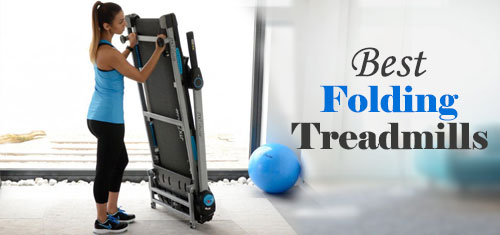Your Abdominal Muscle Anatomy
Having an understanding and visual image of your abdominal muscle anatomy can help you get the most out of your ab workouts.
There are 4 muscles that make up your abdominal muscle anatomy: rectus abdominis, external oblique, internal oblique, and transverse abdominis.
They work together to flex the spine forward and sideways, rotate the spine, and compress the abdomen. Your workouts should be designed to train these muscles in isolation and in combination. Most movements involve more than one muscle.
Rectus Abdominis
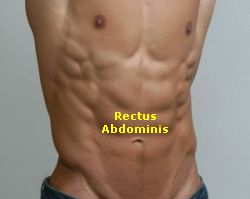
When fully developed, the rectus abdominis is the most prominent ab muscle. When you see a six pack, this is the muscle you're seeing. It runs the length of your ab area, from your pubic bone to the lower chest. Contraction of this muscle flexes your torso.
The rectus abdominis is the primary muscle involved when you do Crunches and Reverse Crunches. Although you hear the terms upper and lower abs, it's really just one muscle.
You can emphasize the upper or lower section depending on which end of the muscle is moving. If your torso is moving towards your hips (Crunches) you're focusing on the upper abs.
If your hips are moving towards your torso (Reverse Crunches), you'll focus on the lower section.
External Oblique
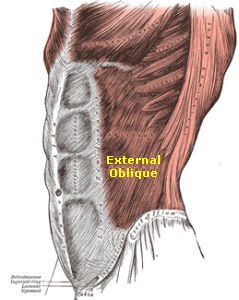
Your external obliques run diagonally down from your lower eight ribs, attaching to the top half of your hip and your rectus abdominis.
The external obliques, along with the internal obliques, are the rotators among the muscles that make up your abdominal muscle anatomy.
They twist your body at the waist and straighten your body when it's bent to the side. Some exercises that work your obliques are: Side Plank, Bicycles, and Wood Chops.
The obliques are critical for many sports performances that involve twisting. Some examples: Baseball, Tennis, Golf, and other racket sports.
Internal Oblique
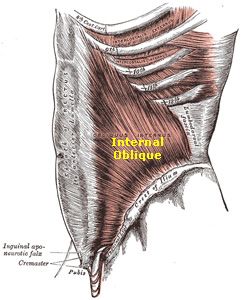
The internal obliques lie underneath the external obliques and run in a diagonally opposite direction.
The internal obliques work with the externals to rotate the trunk.
The internal obliques will also compress the abdomen when both sides contract (as will the external obliques).
Unlike the external obliques, they are not visible when fully developed.
Transverse Abdominis
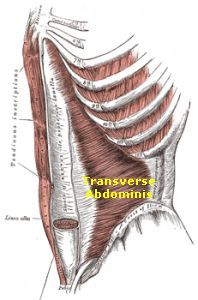
Of the four muscles of the abdominal muscle group, the transverse abdominis is the one that does not cause trunk movement. It is the "suck in your gut" muscle that pulls the ab wall inward.
It is located deep in your abdomen, underneath your obliques. It holds your organs in place and forces expiration when contracted.
This muscle is often overlooked, which is a mistake because training it properly can pull your stomach in, giving you a slimmer profile.
The Plank exercise (both front and side) will really work this muscle.
Hopefully a fuller knowledge of your abdominal muscle anatomy will help you focus your mind on the muscles you're working. This should lead to a much better result. Plus, next time you see a six pack you'll be able to identify the muscles. :-)
Hot Bikini Photos-- Sexy Fit Babes!
The 300 Workout: How the Actors Got Their Incredible Physiques
Just Getting Started? Try the Beginner Ab Workout

